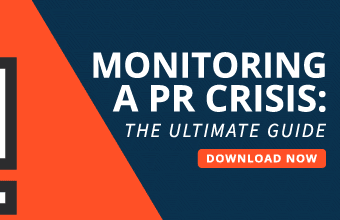Imagine you worked on a campaign for months, went through endless iterations, and launched it, only to find yourself under heavy public fire.
This has actually happened with some of the world’s most famous brands—Pepsi’s Kendall Jenner campaign, and most recently, a campaign by Zara that mimicked and mocked Gaza’s suffering.
And this is not just about PR campaigns. It could be an executive scandal, or accusations of crime—theft, sexual harassment, bribery, breach of confidentiality, etc.
But what if it happened to your brand? In a situation of PR disaster, the brand should be on a war footing to preserve its image or, in some cases, do a rebrand.
Here we will look at things you should consider if your management decides to rebrand after a PR crisis.
Source: Headway on Pexels
Your immediate steps after a PR crisis
The moment when you find out that a marketing campaign has backfired or a negative event has taken place, your management team including your PR team should step right in.
These incidents tend to have the most impact on your company that includes damage to your brand’s reputation, tank your stocks, and wipe out your profits. Hence, they need to be dealt swiftly and strategically.
First, you need to stop the negative news from spreading to a larger audience. This can be done by:
- Being honest with your employees and acknowledging that such an incident has happened.
- Circulate an internal memo or notice that advises employees not to disclose any information that could spiral into rumors.
- Provide a templated response to all concerned members affected by the incident which they should reply to pressmen.
Next, we will look at two ways to overcome a PR disaster, and how as a company you should decide on the right approach.
Reconnect or rebrand: How to decide?
A brand takes years to build. And a lot of effort to gain the trust of people. In the event of a PR disaster, that positive image is tainted, and the brand has to work much harder to win trust back from their audience.
So, there are two strategies to achieve this—reconnect with your audience or undergo a rebrand.
For brands like Pepsi and Zara, it is not a wise choice to do a rebrand. Since they have built massive brand equity, it’s almost impossible to gain the same equity back if they rebrand themselves. So, in that case, reconnecting with your audience is an ideal way out.
Reconnect with your audience
To reconnect, here are some of your options:
- Publicly acknowledge and apologize for the event or mistake that occurred.
- Take countermeasures to contain the damage, such as pulling back the controversial campaign, faulty product, or expelling the accused.
- Be transparent in the steps you are taking to correct the mistake to employees, other stakeholders and the public.
- Associate with a noble cause for the greater good of the society, since this generates a positive sentiment.
But if your brand is new or has faced irreparable damage, it may be better to shed the old brand identity and start afresh.
Opting for a rebrand
Before undertaking this massive exercise, make sure to consult with PR experts and your team to ask whether rebranding is necessary.
Break down this question into additional considerations to arrive at its answer. Ask whether a rebrand can accomplish your goals, whether there may be other ways to achieve the same results, and whether it is worth discarding your existing brand in order to move past the crisis.
Should you opt for a rebrand, it’s worth looking at these aspects in order to do it effectively.
5 things to consider for rebranding after a PR disaster
Rebranding should begin in the same way that any other brand strategy or marketing strategy does—with research and a plan.
You should consider these five key aspects while you think about undergoing a rebrand:
1. Monitor news around your existing brand
People tend to communicate about your brand on all sorts of platforms, but most common of them all is social media. The reason being it allows everyone to publish opinions or reviews.
So, it becomes inevitable for a brand to monitor the buzz around their name before considering a rebrand. For that, they can utilize brand or social monitoring tools to track publicly available mentions containing your pre-defined keyword.
This helps to tag the most relevant and important information and take necessary actions to prepare an effective strategy and formulate the right message.
2. Get an objective opinion
Roping in an external advisor, PR team, or branding expert gives a fresh perspective on your brand and organization. They carefully assess the extent of the damage and provide valuable insights to navigate the PR disaster.
While many big corporations have in-house resources to handle PR crises, there are some situations where getting additional advice from external experts who bring in a lot of experience is still a good idea. They help identify your brand promise, core values, and best approach alongside predicting the response from the audience.
3. Make changes to your brand identity
Once you decide to do a rebrand, you need to think about your brand identity, and whether you want to keep the same logo, style guide, colors and messaging or change it.
Should you opt for changing the identity, you need to work on how to tweak your logo, tagline, messaging, and marketing collateral—both print and digital.
On the digital front, you will have to make changes in your website including the design of your blogs, newsletters, social media graphics, eBooks, whitepapers, etc.
4. Work on your messaging strategy
After you have molded your new brand identity, you need to think about what will communicate your refreshed brand to your audience.
Start off by setting proper expectations and clearly mention what’s changing and what it means for customers. This includes:
- Details of what is changing and what will remain as is
- When the changes will be implemented
- Reasons for rolling out the change
- How it will affect your customers
You don’t want it to be a guessing game—llet people know why they should be excited about what’s coming.
5. Target the channels your audience uses
Selecting relevant channels is as important as determining the right message. If you put out an update on TikTok, but your audience is B2B, it’s unlikely to have a desired impact.
You need to list all the channels, both organic and paid, which includes your website, your social media handles, email newsletters, press releases, and other digital publications.
Try to amplify your reach by either promoting your posts or posting at the right times for each of those channels and at the desired frequency. You can repost your earlier message multiple times across different time zones so that everybody is wary of your rebranding update.
Final thoughts
Rebranding is a costly affair. It should be a last resort since it is as good as shutting your old business down and rebuilding things from the ground up.
The amount of time, money, and energy that you have invested in your current brand is no small consideration. And the question of whether or not to rebrand your business is never a black and white issue as a result.
A PR disaster is something you can rarely predict. But you need to be fully prepared in case a fiasco happens. Expert services in branding and public relations right from the get-go can help determine if a rebrand makes sense, what you can leverage from your existing brand, and even whether a crisis communication plan can keep your brand intact instead of starting over.









